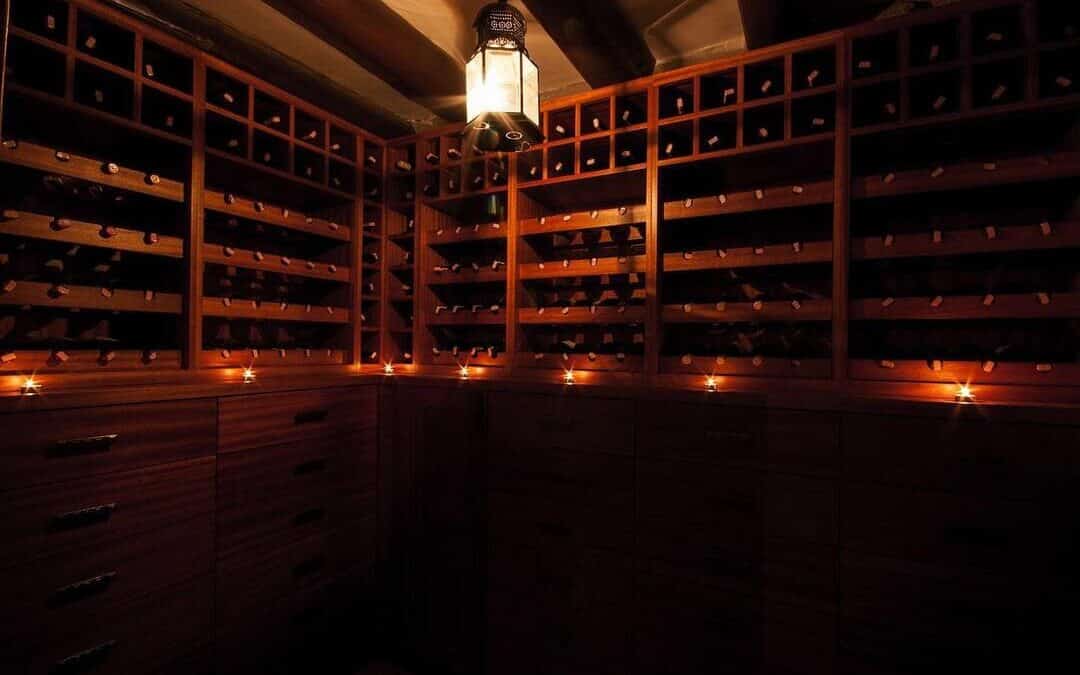La wine cellar can be defined as the cross and delight of every restaurant as it is a double-edged sword: if badly managed it can bring the restaurant to ruin, if well managed it can bring great financial satisfaction and customer loyalty. Therefore in this article I want to give you 8 valuable tips to get off on the right foot, avoid common mistakes, choose the ideal ambience, arrange the wines carefully, manage your wine cellar of the day, and manage supplies and purchases. Actually, these tips are not only useful for those who own a restaurant, but are perfect for any sommelier and wine enthusiast who wants to build and maintain a small personal wine cellar where he can carefully store his precious wines without risking letting them spoil.
Wine cellar: 8 practical tips for creating and managing an efficient structure
#1 wine cellar: where do we start?
- Inspect the premises and assess whether the requirements for optimal wine storage are in place and there are no impossible penalties;
- Draw up a business plan based on a study of the market and clientele in the area, the level of the restaurant and the type of catering it offers;
- Realising the project.
Wine cellar #2: what to avoid?
- No old, dusty rooms: the cellar must comply with precise rules of hygiene and organisation;
- One should not get carried away with enthusiasm by proposing great wines that nobody will buy;
- One should not take advantage of special discounts on large quantities of insignificant wines without sales assumptions.
Wine cellar #3: what is the ideal environment?
- Temperature stable between 11° - 15°;
- Pebble and gravel floor compacted with soil to help maintain the correct humidity;
- Relative humidity of the environment around 65 - 70%;
- North-facing room;
- Careful lighting, with low-power sodium or shielded lamps and never neon, so as to avoid defects such as so-called light taste and other oxidative processes;
- Food with intense and penetrating flavours and aromas should not be stored;
- Boilers and burners must not be placed in the room;
- Avoid persistent noise and vibration.
You can now subscribe to my newsletter or scroll down the page to continue reading the article!
Wine cellar #4: how do you arrange the bottles?
- Wooden shelves to dampen any vibrations and thermally insulate the bottles;
- Horizontal arrangement;
- The shelves must be clean;
- The bottles must be stored in a suitable and very orderly manner: sorted by country, by region, by colour and ageing potential so that their search is quick and rational;
- From the bottom up: sparkling wines, white wines, rosé wines, young red wines, evolved red wines. This is because the temperature increases from the bottom upwards;
- Tags with the name of the wine, the producer and the vintage must be placed on each shelf.
Wine cellar #5: how to manage the wine cellar of the day?
To make the service in the restaurant more functional, there must be at least one wine cabinet for storing wines that will be more easily sold during the day at the following temperatures:
- Dry sparkling wines = 4 - 6 °C
- Sweet sparkling wines = 6 - 8 °C
- Young white wines and rosé wines = 8 - 10 °C
- Structured and evolved white wines = 10 - 12 °C
- White raisin and fortified wines = 10 - 12 °C
- Structured rosé wines and delicate, slightly tannic red wines = 12 - 14 °C
- Medium structured and tannic red wines = 14 - 16 °C
- Fortified wines and red liqueur wines = 14 - 16 °C
- Evolved red wines with great structure and tannicity = 16 - 18 °C
Keep in mind that at the time of serving, it is preferable to have a couple of degrees less because the temperature rises quickly.
Wine cellar #6: how to supply wines?
- Market study on the type of clientele of the venue;
- Study of the venue's spending capacity;
- Analysis of market trends and real sales possibilities;
- Analysis of storage capacities as a function of storage cellar size and day cellar size;
- Discussion with the chef on the menu and seasonality to draw up a list of the types of wines to buy.
You can now buy my book Sommelier: the illustrated manual or scroll down the page to continue reading the article!
Book "Sommelier: the Illustrated Manual" Special Edition 2024
All my notes on wine and food in one book.
€ 38,00 VAT included!
In stock (can be backordered)
Wine cellar #7: how to buy wine?
The purchase of wines and spirits implies a big financial commitment and is therefore a very delicate phase in terms of the choices to be made. Large bottles represent an immobilisation of capital with the risk that if they are not sold they can represent a huge financial loss.
The purchase of wines and beverages must be made on the basis of consumption and cellar stock control, which must always be up-to-date. The sommelier must select suppliers and get to know the producers directly. In addition, it is necessary to check the reliability of distributors, the regularity and punctuality of deliveries as well as the stability and competitiveness of wine prices. Fundamental is the sommelier's ability to assess the quality/price ratio of wines.
Wine cellar #8: wine prices and stock rotation
Um... no, let's not talk about that today. Since it's a complex topic it deserves an article all to itself so bear with me until tomorrow....
As always, I hope you enjoyed this article and found it useful!
Cheers 🍷
Chiara


